Before and After: Greensburg, Kansas
Friday, 13th November 2009 by Chris Hannigan
If you ever need reminded of just how powerful Mother Nature can be, look no further than the city of Greensburg, Kansas.
A small community in the heart of the United States, Greensburg has had its share of severe conditions over the years. Now, thanks to the differing image capture dates, we’re able to see a dramatic before and after comparison of the most extreme weather to hit the town in its history.
The aerial view of the city shows a community very similar to many other towns scattered across the Kansas countryside. Switching to street view however is an entirely different story. On May 4, 2007, over 95 percent of the city was destroyed when a 2.7 km (1.7 mile) wide EF5 tornado1 ripped through town. The National Weather Service recorded 330km/h (220mph) winds during the storm, which sadly killed 11 people.2
Driving around town in the virtual street car, it's hard to find a single thing built before the tornado that remains standing today. Most of the structures visible in street view, including the water tower, were subsequently rebuilt.
Greensburg is home to the world's largest hand dug well, which is 33 m (109 ft) deep and nearly 10 metres (32 ft) across.3 Known as the "Big Well", its associated museum was completely destroyed by the winds, but a 450 kg meteorite stored in the museum survived, and was found a few days later in amongst the rubble4.
Greensburg today is rebuilding as a "green" town. Reconstruction is being accomplished with ecologically-sound building supplies. A new factory is being built near town to manufacture ultra-green modular homes, and the city will be breaking ground on a facility for four 2.5-MW wind turbines to handle all their power needs. Maybe the city's name is a coincidence, but Greensburg may soon be the greenest town in America.
Information about the Greensburg tornado can be found on Wikipedia, and you can read about Greensburg's rebuilding effort on their website.
-
The tornado was the first EF5 recorded after the Enhanced Fujita Scale was introduced in 2007. ↩︎
-
However thousands of people were saved by the 20-minute warning given by the town's severe-weather sirens. ↩︎
-
In fact only the Pozzo di S. Patrizio in Italy is larger. ↩︎
-
Even 330 km/h winds can't blow away a 450 kg rock! ↩︎
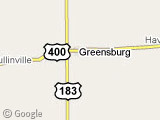
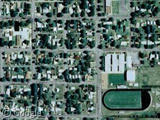
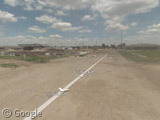
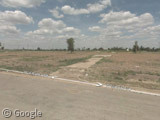
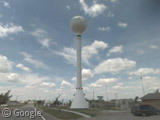
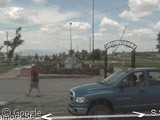
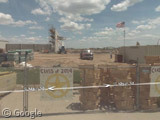
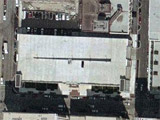
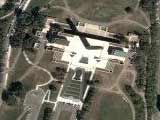
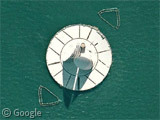
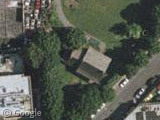
The much smaller town of Manchester, SD, was wiped off the map in 2003
View Placemark,,0,13.34
http://en.wikipedia.org/wiki/Manchester,_South_Dakota
To be honest there wasn’t much there even before the tonado, though! (Google Earth has 1991 imagery).
Wow that’s no joke… that place was completely destroyed!
Even though it “might not have been much before the tornado”….it was home and sometimes “home” is everything to people. Not all want to reside in huge towns or cities….some of us thoroughly enjoy living life in small towns.